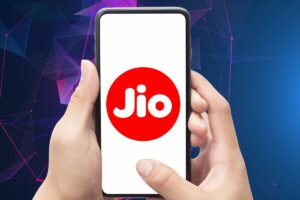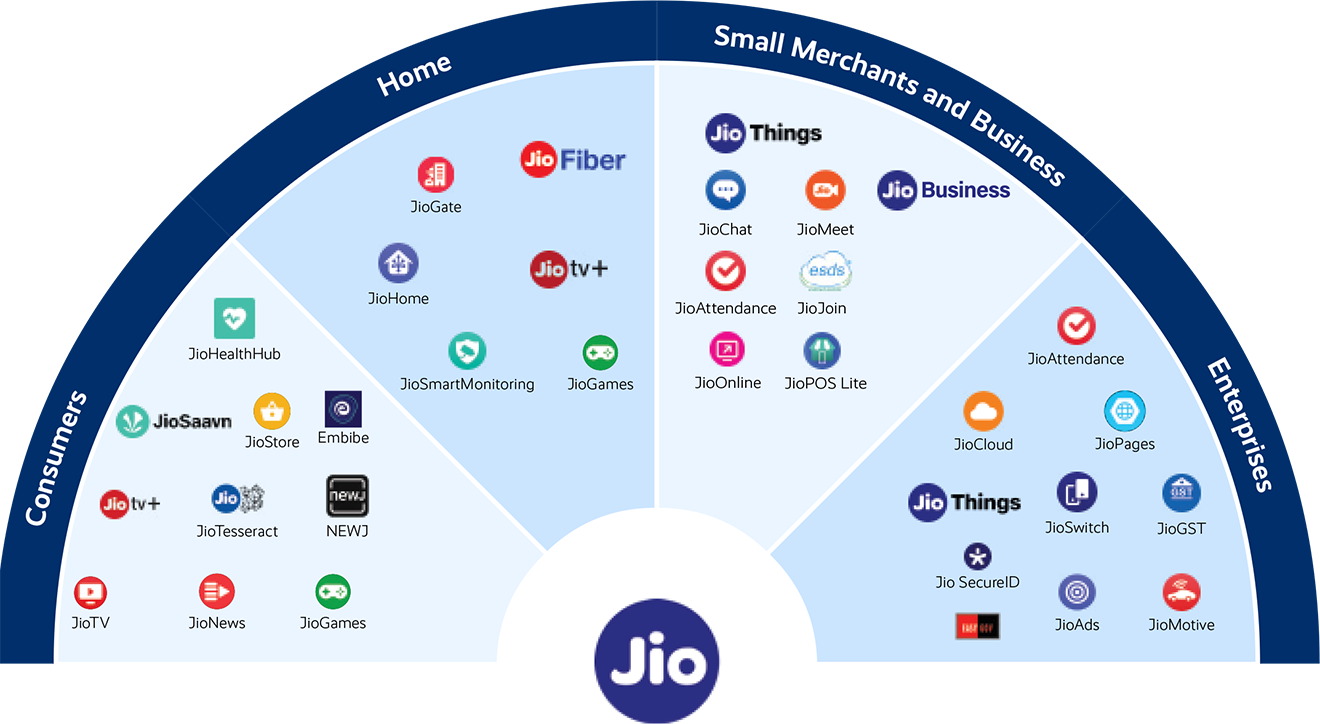The Rise of Jio … from free phone to super app, and now India’s lifestyle brand, created by the petrochemical giant Reliance … How to reimagine your future with new audiences, in new sectors, with new brands and business models
January 10, 2025

When Reliance Jio launched in 2016, few could have predicted the scale and speed with which it would transform India’s digital landscape. What began as a low-cost mobile network offering free voice calls and dirt-cheap data quickly evolved into a national phenomenon—democratizing internet access, reshaping the telecom industry, and paving the way for a digital lifestyle revolution. Today, Jio is no longer just a telecom company; it is India’s most ambitious attempt at creating a super app and a lifestyle ecosystem that rivals global tech giants.
Jio Phone … imagining a digital life
Jio was born out of a vision by Mukesh Ambani, Chairman of Reliance Industries, to build a “digital lifeline” for India. With billions invested in laying fibre optic cables across the country, constructing cell towers, and building infrastructure from scratch, Jio launched with unprecedented scale and ambition. It entered the market with a game-changing strategy: six months of free data and voice calls for users. This was not just a promotional offer—it was a calculated play to acquire users, disrupt incumbents, and build a digital-first user base.
Within the first year, Jio had acquired over 100 million users. It forced competitors like Airtel, Vodafone, and Idea to lower prices or merge to survive. Jio’s entry marked the beginning of the end of the old telecom order in India and the birth of a digital economy.

Jio as a platform … beyond connectivity
Jio’s core strength lies in its ability to turn users into participants in a broader ecosystem. Recognizing that telecom margins alone wouldn’t sustain its hypergrowth ambitions, Jio quickly began developing a portfolio of digital services.
The MyJio app became the nerve centre of the ecosystem—bundling together mobile recharges, account services, entertainment, news, shopping, payments, and cloud storage. The app’s design echoed global super apps like WeChat or Alipay in China, aiming to become the primary interface for a digital lifestyle.
Services like JioCinema, JioTV, JioSaavn (music streaming), and JioNews turned the platform into a content hub. JioFiber extended its reach into homes, offering broadband, set-top boxes, and smart home features. JioMeet entered video conferencing to rival Zoom. And with JioMart, Reliance stepped into e-commerce, connecting millions of small retailers and kirana stores into a digital retail network.
Each new service reinforced the others—creating lock-in through convenience, affordability, and cross-platform integration.

Driving growth … strategic partners and expertise
Jio’s rise did not go unnoticed by global tech giants. In 2020, during the pandemic, Reliance attracted over $20 billion in investments into Jio Platforms Ltd., including stakes from Facebook (now Meta), Google, Qualcomm, Intel, and Silver Lake. These investments weren’t just capital injections—they were strategic bets on Jio’s ability to become India’s digital gateway.
Facebook’s investment included deep integration between WhatsApp and JioMart, enabling conversational commerce and social retail. Google’s investment focused on building affordable Android smartphones and digital infrastructure for the next billion users.
These alliances validated Jio’s ambitions and gave it a war chest to expand into fintech, edtech, healthtech, and enterprise solutions.

Jio’s Super App … the strategy for growth
Unlike global super apps that often begin with a dominant function (e.g. messaging in WeChat or payments in Alipay), Jio’s super app strategy is more horizontal—aiming to offer a unified digital lifestyle through multiple core services bundled under the MyJio umbrella. These include:
-
JioCinema and JioTV for streaming entertainment
-
JioSaavn for music
-
JioMart for grocery and e-commerce
-
JioPay for digital payments and UPI
-
JioMeet for communication and collaboration
-
JioHealthHub for telemedicine and health records
-
JioCloud for storage and backup
-
JioGames for mobile and cloud gaming
-
JioFinance for loans, insurance, and digital banking
Each of these services is deeply embedded into a single app, with a single sign-in, unified wallet, and seamless navigation, aiming to replicate the convenience of an operating system.
Jio as lifestyle brand … with a national identity
Jio’s brand resonates far beyond technology—it has become a symbol of national digital aspiration. The brand name “Jio” means “to live” in Hindi, and the company has positioned itself as an enabler of a better life for every Indian. Its low-cost plans brought millions online for the first time—farmers, small businesses, women, students—fueling not just consumption but education, financial inclusion, and social mobility.
As Jio expanded into smart devices—feature phones (JioPhone), smartphones (JioPhone Next), routers, and IoT devices—it deepened its position as a lifestyle brand. These devices are priced aggressively and designed specifically for the Indian context: dual SIMs, multilingual support, voice navigation, and UPI readiness.
Jio’s foray into fashion and entertainment partnerships (like with IPL, Bollywood releases, and celebrity endorsements) has added a layer of cultural capital—bridging rural and urban audiences under a single digital brand.
Data as currency … building the digital economy
Jio’s business model revolves around data as currency. Every click, payment, search, and video view generates insights that feed its personalization engines. This data-centric approach allows Jio to create targeted bundles, cross-sell services, and tailor content for hyperlocal audiences.
The super app model reinforces this loop—giving Jio a 360-degree view of user behavior. It’s not just selling internet or products; it’s selling convenience, trust, and identity.
Importantly, Jio is also building the infrastructure for India’s digital economy—through Jio Platforms, which offers cloud, edge computing, AI, and 5G capabilities for startups, enterprises, and government services. Jio is thus positioning itself as both the consumer interface and the backend enabler of India’s digital transformation.
Challenges … disruption is not easy
Despite its meteoric rise, Jio faces serious challenges:
-
Competition from nimble startups (PhonePe, Paytm, Cred) and global giants (Amazon, Flipkart, Google Pay) is intensifying.
-
Integration complexity—Jio’s vast ecosystem must deliver seamless UX across dozens of services.
-
Regulatory scrutiny—as a dominant player in many sectors, Jio will increasingly face antitrust and privacy concerns.
-
Data privacy and trust—as Jio collects more data, it must ensure user trust through transparency and ethical use.
-
Rural infrastructure—expanding 5G and broadband in remote areas still requires significant investment.
What’s next? … Jio as India’s Digital Operating System
What makes Jio unique is not just its business model but its systemic vision. While most companies target a segment or a sector, Jio is building an entire digital civilization—from connectivity and commerce to education, health, media, and governance.
Its ambitions are not unlike those of Tencent or Alibaba in China, but tailored to India’s diversity, language complexity, income distribution, and socio-economic dynamics. The recent launch of Jio Financial Services, its move into AI and cloud, and plans for 5G-enabled edge solutions all point to a company shaping India’s digital infrastructure for decades to come.
Jio is more than a company—it is the infrastructure, interface, and identity of a new India.
So what Makes Jio Unique
| Strategy | Description |
| Zero-price market entry | Free data and phones created massive adoption |
| Ecosystem-first approach | Every service linked through MyJio app |
| Rural-first design | Designed for low-literacy, low-income markets |
| Platform + Partner strategy | Invested in and integrated with global tech giants |
| Lifestyle branding | Built digital services into everyday Indian life |
Jio is not just a telecom operator — it is redefining what a company can be in emerging markets: an integrated platform combining connectivity, content, commerce, and community.
$100 billion business for 1.1 billion people
Reliance Jio is now heading towards a blockbuster IPO
Owners & Major Investors
- Parent company: Reliance Jio Infocomm is a wholly owned subsidiary of Jio Platforms, which is in turn controlled by Reliance Industries Ltd (RIL) — chaired by Mukesh Ambani .
- Equity partners: Starting mid-2020, global tech and capital firms acquired minority stakes (~33% total in Jio Platforms), including:
- Meta (Facebook) – ~9.99%
- Google – 7.7%
- Silver Lake – ~1.15%
- Intel, Qualcomm, KKR, General Atlantic, ADIA, Vista, Mubadala, TPG, others .
Subscribers
- Wireless users: ~479 million as of late 2024, up ~4% YoY .
- 5G subscribers: ~148 million by September 2024 .
- Fixed wireless broadband (JioAirFiber): ~2.8 million by Sept 2024 .
- Wired broadband (JioFiber): ~10.4 million subscribers as of Dec 2023 .
- Combined broadband: ~470 million users across wired + wireless by Dec 2023 .
Performance
Q2 FY 2025 (quarter ending Sept 2024)
- Revenue: US $4.43 billion (~₹36 000 crore) — up ~17.7% YoY .
- EBITDA: US $1.9 billion — +17.8% YoY .
- Net profit: US $780 million — +23.4% YoY .
Q4 FY 2025 (quarter ending March 2025)
- Net profit: ₹7,022 crore — a 25.7% increase YoY (from ₹5,587 cr) .
- Group digital services EBITDA growth: +18%, driven by telecom tariff hikes .
- Jio Infocomm ARPU: ₹206.2 — +13.5% YoY .
- Subscriber additions: +6.1 million in Q4, supported by tariff revisions .
Overall as a group
- Reliance Industries recorded a total consolidated profit of ₹19,407 crore (~US $2.27 billion), significantly bolstered by its retail and digital arms .
Valuation and IPO
- Valuation at 2020 fundraising: Pre-money valuation of $58 billion; proceeds totaled ~$13.7 billion .
- Analysts’ estimates (2024): Valuation pegged between $100–112 billion .
- Planned 2025 IPO: Expected to be one of India’s largest, targeting ₹10 lakh crore (~$120 billion) valuation .
| Metric | Latest Figures |
| Wireless subscribers | ≈ 479 million |
| 5G subscribers | ≈ 148 million |
| Total broadband users | ≈ 470 million |
| Q2 FY25 Revenue | US $4.43 billion |
| Q2 FY25 Net Profit | US $780 million |
| Q4 FY25 Net Profit | ₹7,022 crore (+25.7% YoY) |
| ARPU | ₹206/mo |
| Raised from investors | ~$13.7–20 billion |
| Current valuation | $100–112 billion |
| IPO target valuation | ₹10 lakh crore (~$120 billion) |
The $100 bn SuperApp for India’s billion people
Jio has scaled its ecosystem through aggressive subscriber growth, surging revenue and profit performance, and high-profile global investment—setting the stage for a blockbuster IPO. Its valuation now rivals global tech giants, highlighting its evolution from telecom disruptor to India’s digital infrastructure powerhouse.
More from the blog